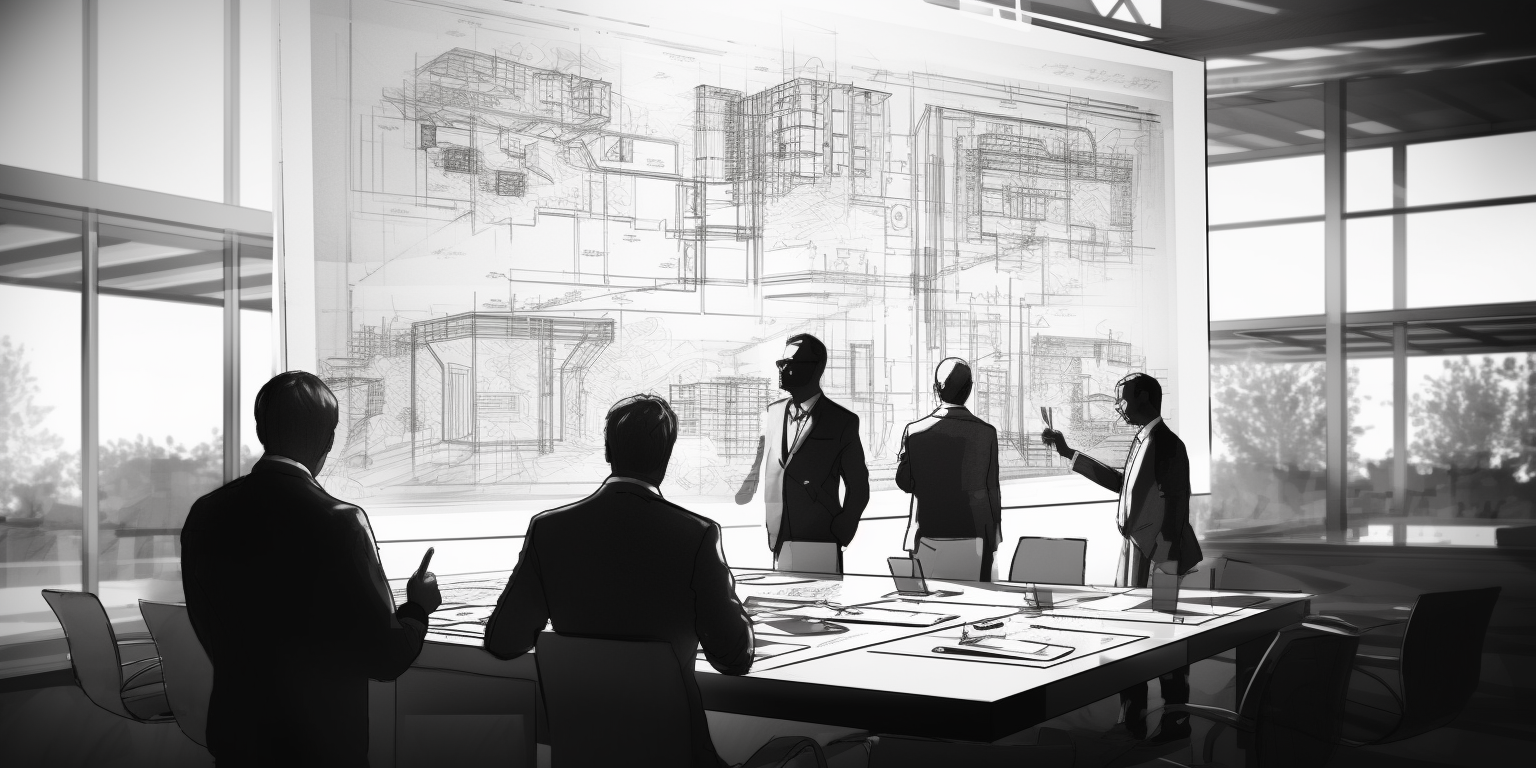Architecture / Design Development is a crucial phase within the system engineering profession where candidates transform requirements into detailed system designs. This process involves defining and assessing candidate architectures, establishing design characteristics, and managing the selected architecture. It’s a meticulous process that requires a comprehensive understanding of different viewpoints and an ability to balance technical demands with operational needs. In essence, it is the phase that shapes the future of systems, making it the lynchpin of successful system engineering.
Table of Contents
- What is Architecture/Design Development? An In-Depth Look
- Preparation for Architecture Definition
- Architecture Viewpoint Development
- Candidate Architecture Modelling
- Architecture to Design Relation
- Candidate Architecture Assessment
- Architecture Management
- Preparation for Design Definition
- Alternative Assessment for System Elements
- Design Characteristics & Enablers Establishment
- Design Management
- Case Study: Naval Combat System Development in the USA
- Frequently Asked Questions
- 1. What is meant by Architecture/Design Development?
- 2. What are the primary tasks involved in Architecture/Design Development?
- 3. Why is the assessment of candidate architectures important?
- 4. What is meant by ‘Design Management’?
- 5. How does the ‘preparation for design definition’ enhance the process of Architecture/Design Development?
What is Architecture/Design Development? An In-Depth Look
Preparation for Architecture Definition
System Engineering often starts with an initial idea or concept from which a more detailed system is derived. This stage, known as preparation for architecture definition, is all about collating necessary information and understanding the requirements of stakeholders to inform the architecture of a system. The information gathered may include functional, operational, and physical constraints, helps engineers craft a system to meet specific needs.
Architecture Viewpoint Development
The development of architecture viewpoints is a core activity involved in architecture/design development. It involves determining the structures or perspectives necessary to fully describe a system. This is akin to creating a blueprint that identifies the system’s key elements and how they interrelate. Successful viewpoint development requires intensive collaboration with stakeholders, to ensure all relevant perspectives are considered.
Candidate Architecture Modelling
Once architects have created potential viewpoints, the next step involves developing models and visual representations of the potential architectures. These models are often detailed diagrams that represent how various system parts interact using different viewpoints. From these diagrams, engineers can understand and manipulate the system architecture more effectively.
Architecture to Design Relation
Relating architecture to design is the process of incorporating the defined architecture into a tangible design. During this phase, the architecture’s viewpoints and models serve as input for the design process, leading to a structured system design that aligns with the initial concept.
Candidate Architecture Assessment
Assessing candidate architectures involves evaluating the elaborate architectures against the established criteria. This activity ensures that the selected architecture aligns perfectly with the system requirements and can deliver the intended results. Assessment factors may include cost implications, performance expectations, regulatory constraints, and the system’s future scalability.
Architecture Management
Managing the selected architecture is a gold-standard practice in the architecture/design development process. It involves tracking the implemented architecture, ensuring it remains true to its design, and making necessary revisions where required. This critical task helps to maintain the system’s integrity and reliability.
Preparation for Design Definition
Before engineers arrive at a final design, they must prepare for the design definition. This involves compiling all the insights from the previous stages, factoring in the constraints and trade-offs, and setting definitive criteria for the design. This activity sets a clear path towards the design finalisation.
Alternative Assessment for System Elements
Notably, good system engineering doesn’t just hinge on a single fixed design decision. It involves assessing alternatives for obtaining system elements. The assessment considers factors like cost, durability, functionality, and even supplier reliability for procurement.
Design Characteristics & Enablers Establishment
The establishment of design characteristics and enablers is a key step in creating an implementable design. This involves defining critical qualities needed for system elements and identifying factors that will support their successful introduction. This step ensures optimal system performance in the final stages of development.
Design Management
The last piece of the architecture/design development puzzle is managing the system design. This involves overseeing the design’s implementation and executing necessary modifications when needed. Briefly, it’s all about turning a paper design into a tangible, working system.

A compelling example of systems engineering in action is the conception of a Naval Combat System in the United States. Charged with high-stake tasks like air, surface, and underwater warfare, the system warranted complex, interconnected elements including electronic, mechanical, and human factors, squarely placing systems engineering at its heart.
The outset of this project presented a significant challenge: managing the multitude of diverse stakeholders – naval officers, defence contractors, legislators, and the public. Balancing these myriad viewpoints proved as testing as the system’s complexity.
The complexity of the Naval Combat System was another mountain to climb. Translating intricate interrelationships between individual system elements into a coherent, understandable, and manageable design was a significant challenge in the architecture/design development process.
Assessing candidate architectures also posed hurdles. Given the enormous national security importance and financial investment attached to this project, the flat-out demand for absolute surety around cost-effectiveness, performance reliability, and future scalability left no room for compromises.
However, these challenges met their match in the dedicated application of systems engineering principles. Through extensive stakeholder collaboration and comprehensive use of modelling tools, the team navigated diverse requirements and the intricate system complexity. Assessments were meticulously rigorous, balancing performance simulations, operational risks, costs, and future scalability.
Overcoming these challenges led to the successful development and subsequent implementation of an efficient Naval Combat System, bolstering US national defence. This case study underscores the decisive influence of systems engineering in enlivening complex, impactful projects – illustrating its key role in shaping our technological and security landscapes.
Frequently Asked Questions
1. What is meant by Architecture/Design Development?
Architecture/Design Development refers to the process in system engineering where requirements are translated into a complete, detailed system design. The process involves multiple steps, including the preparation for architecture definition, the development of architecture viewpoints, and the assessment of candidate architectures. The defined design is later implemented to create a working system.
2. What are the primary tasks involved in Architecture/Design Development?
The primary tasks cover the identification of system requirements, creating architecture viewpoints, developing models for potential architectures, analysing architecture candidates, managing the selected architecture, and finalising system design. Each task is critical to the overall success of any given system.
3. Why is the assessment of candidate architectures important?
The assessment of candidate architectures acts as checks and balances, ensuring the proposed architecture meets all system requirements adequately. This thorough appraisal process helps to eliminate potential flaws or weaknesses before the system enters its implementation phase, thus saving time and reducing costs.
4. What is meant by ‘Design Management’?
‘Design Management’ refers to the task of overseeing and controlling the system’s design throughout the implementation phase. This includes monitoring the progress, making necessary modifications, and ensuring the final product aligns with the pre-defined design. Efficient design management guarantees a smooth transition from a theoretical design to a tangible and operational system.
5. How does the ‘preparation for design definition’ enhance the process of Architecture/Design Development?
‘Preparation for design definition’ is an important phase that compiles insights from earlier stages to help engineers define the final design. This activity clears the path towards finalising the design, assisting engineers in making informed design decisions whilst considering all constraints and trade-offs.







